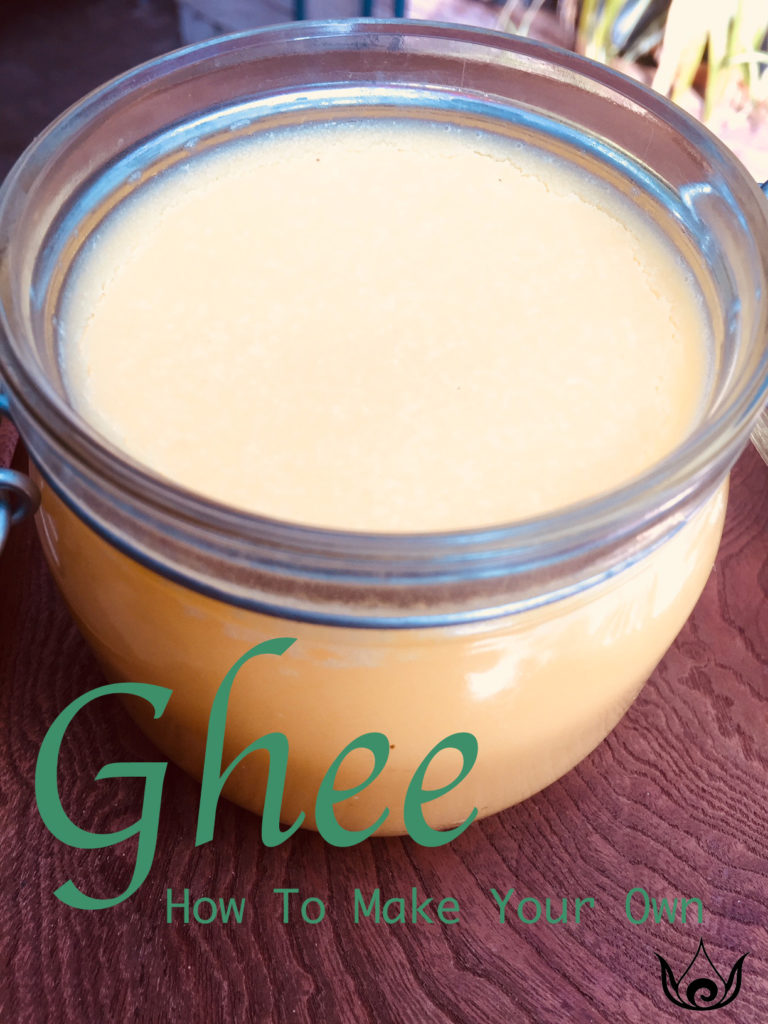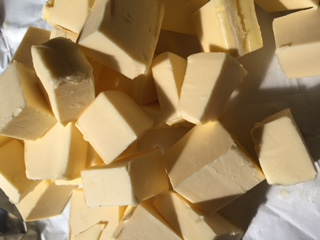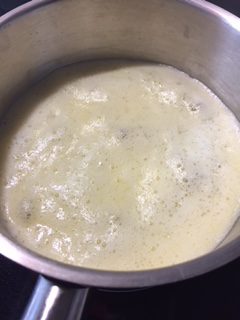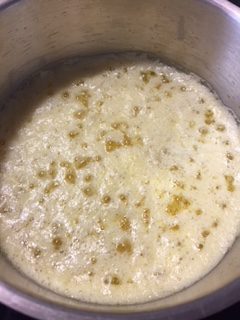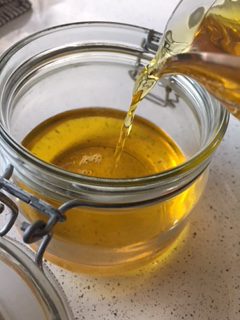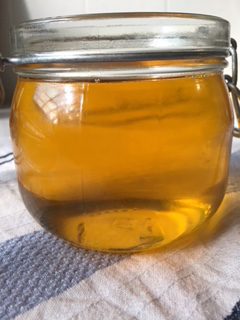How to Make Ghee
This is homemade ghee. Ayurvedic cooking has used ghee for centuries and it is recommended for Pitta and Vata doshas. If you feel like your skin is dry, taking ghee might help to smooth it from the inside, especially if you are Vata body type.
Making ghee involves removing milk solids, so it’s often suitable for people with lactose problems. It also has a high smoke point, making it great for cooking. I use ghee the same as using a butter. The best point of homemade ghee is that it’s tasty.
Ghee is full of:
- Short, medium and long chain fatty acids, both unsaturated and saturated
- Omega 3 and Omega 9 essential fatty acids
- Vitamins A, D, E and K
- Ghee made from organic butter of grass-fed cows is one of the highest natural sources of CLA (Conjugated Linoleic Acid)
- 9 phenolic antioxidants
- Many other minerals
How to Make Ghee
1. Cut 1kg of unsalted organic butter into small pieces.
2. Melt over medium heat in a heavy-bottomed pot.
3. Turn the heat down to medium-low. You should see bubbles coming from the thick foam. Slowly the bubbles will increase and the foam will start to clear. The bubbles will get bigger and clearer.
4. Once you can see the foam disappear and the butter has a nice golden colour, the milk solids have settled at the bottom of the pan and have begun to brown. Don’t stir it. Strain it into a container.
5. You can keep the ghee at room temperature.
6. Enjoy the ghee as a replacement for butter.

